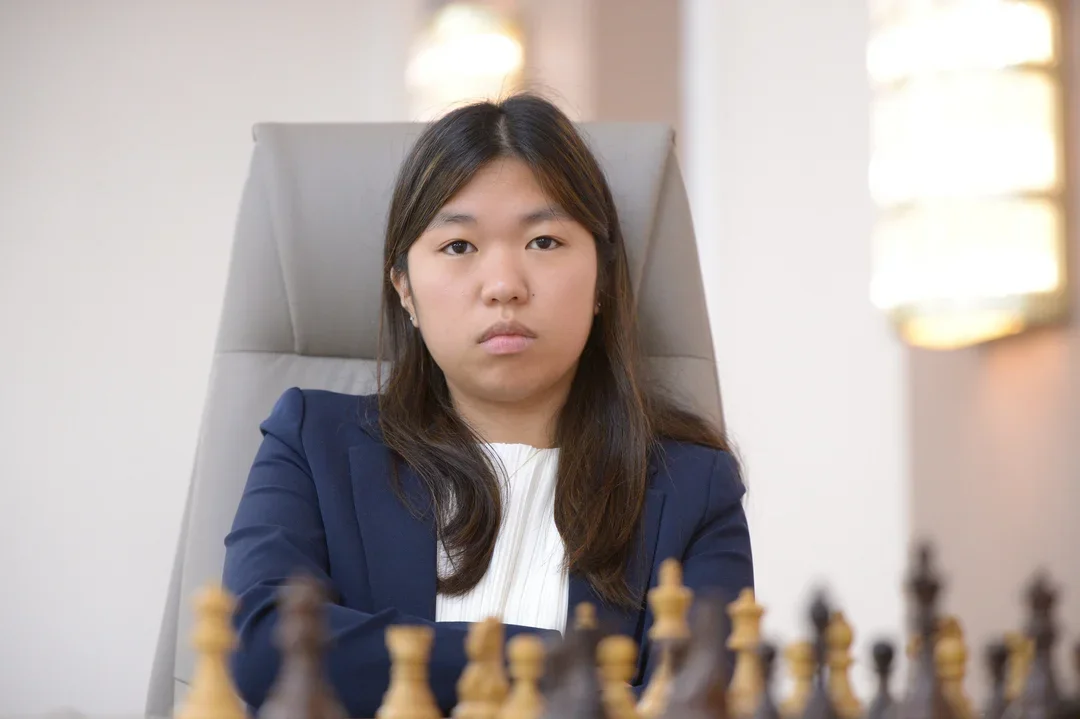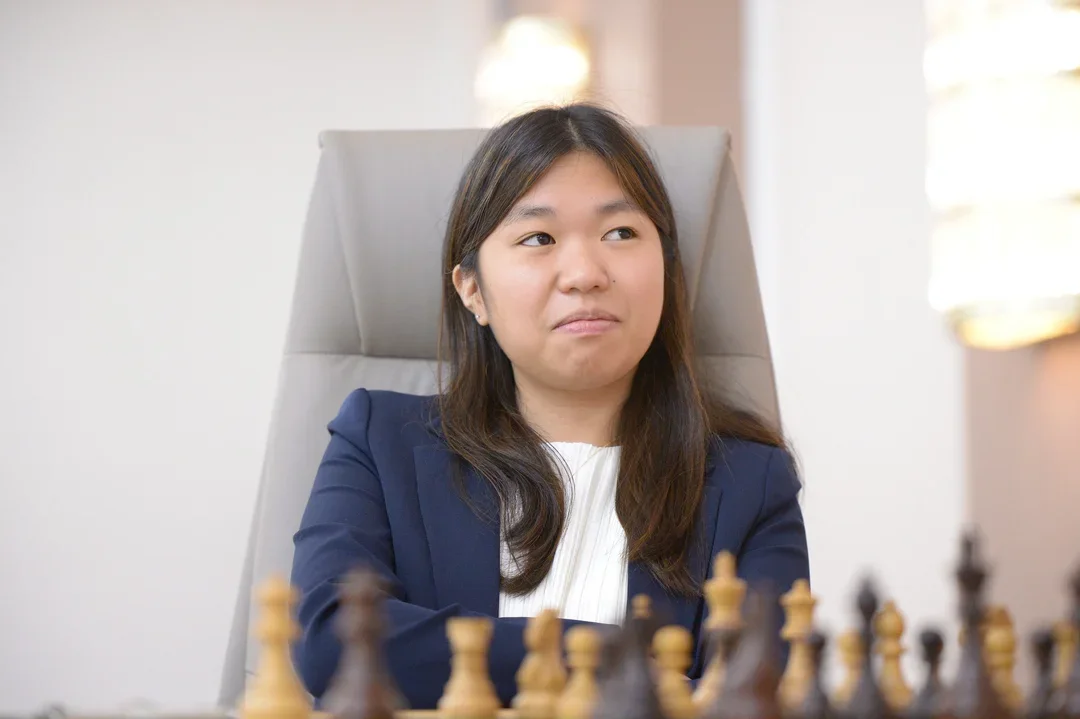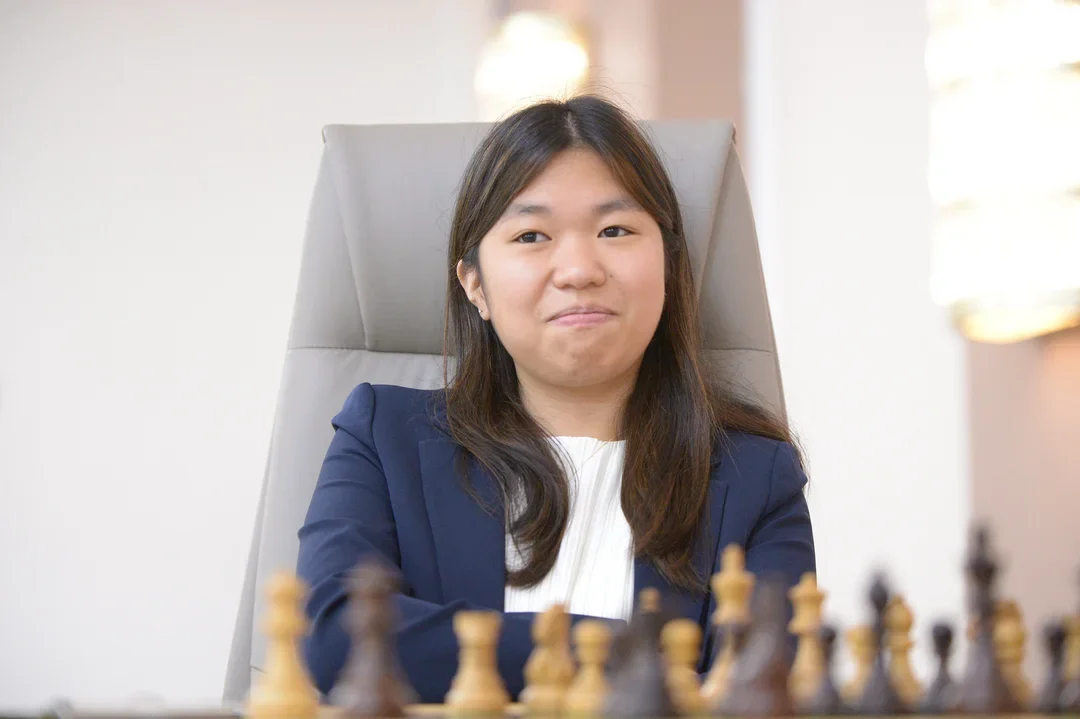The 2025 FIDE Women’s World Cup began Saturday, July 5 in Batumi, Georgia, with 107 players vying for their share of the $691,250 prize fund and one of three qualifying spots for the 2026 FIDE Women’s Candidate Tournament.
Four Americans compete in this iteration of the biannual event. In order of starting seed, these players are IM Carissa Yip (22nd), IM Alice Lee (38th), GM Irina Krush (43rd), and WGM Thalia Cervantes (73rd).
All four Americans won their first match and advance to the second round, which begins on Wednesday, July 9 at 6:15 a.m. CDT.
Read on for more information about the format, the results of the first round, and annotations from WGM Sabina Foisor.
Each round consists of two-game classical matches (40 moves in 90 minutes with 30 minutes of bonus time on move 40 and a 30-second increment from move one), with the loser of each match being eliminated. One game of the match is played per day, with tie-breakers taking place the day after the second classical game.
The tournament runs until July 27 (or July 28 if tie-breakers are needed for the first- or third-place match), making for a total of seven rounds. Play continues daily, with the exception of one rest day on July 15 (after round 3) and a second rest day on July 25 (after the semi-finals).
Due to the event’s knock-out format, not all players compete in the first round. This is because the number of players is not a power of two, meaning that the bracket would be uneven. So, the first round whittles the field down from 107 players to 64, which is a bracket-friendly number that should be familiar to fans of college basketball.
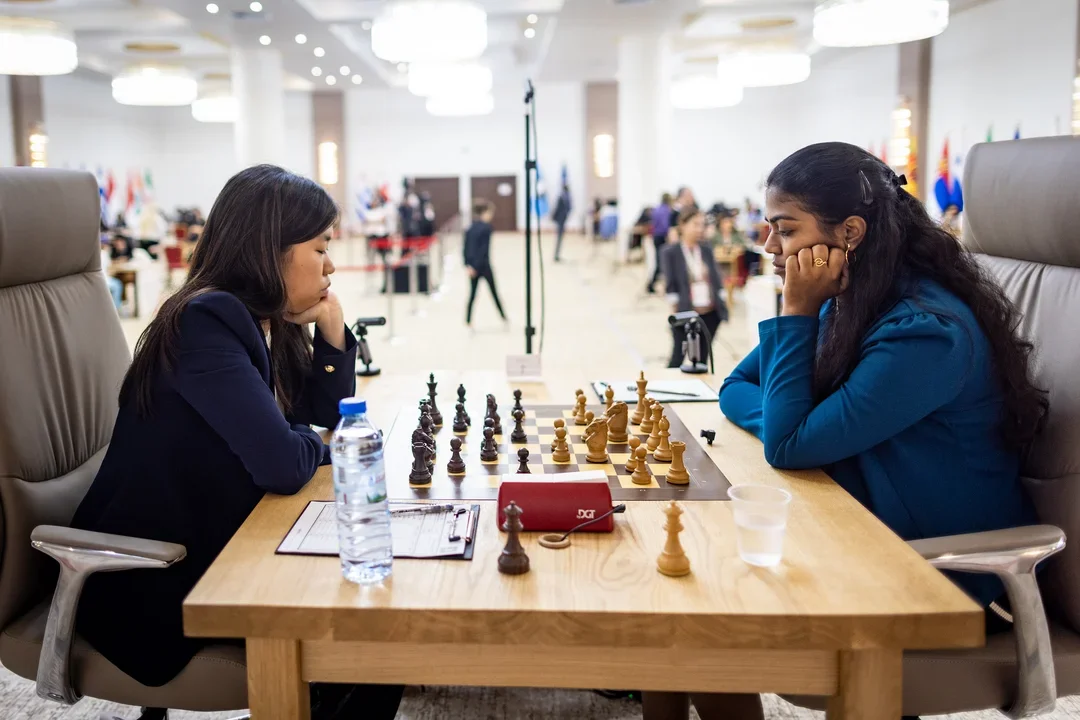
As a result, the 21 highest-rated players were seeded directly into round two, while the remaining 86 players fought for the final 43 spots. Thanks in part to her remarkable run at the Cairns Cup last month, Yip entered as the 22nd seed, making her the highest-rated player to not earn a first-round bye, putting her on board one for the opening round.
Yip won her match against 16-year-old WFM Hannah Wilson (Barbados) 2–0, making her the only American to “sweep” her match. Below is her first-round win, with annotations by WGM Sabina Foisor.
Lee also got off to a hot start in her match against Sri Lankan WIM Devindya Oshini Gunawardhana. The 15-year-old Lee is becoming a veteran in international play, as she entered not only with a higher rating and title than her opponent, but with a two-year age “advantage” as well!
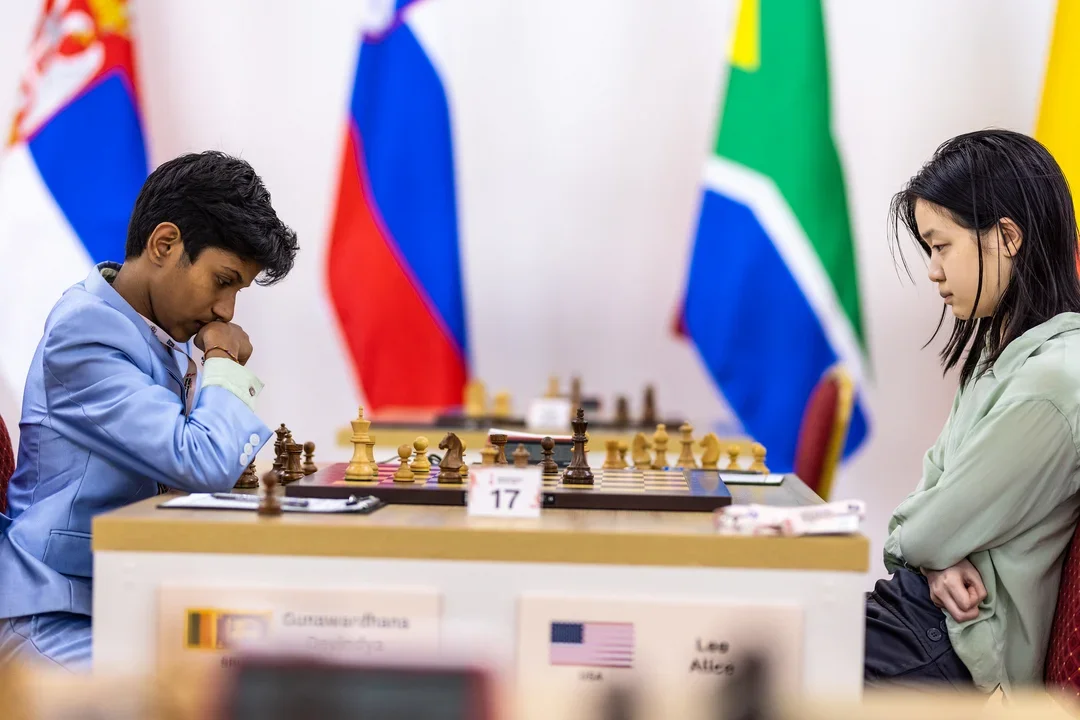
Below is Lee’s first-round win, again annotated by Foisor.
After drawing her second game with relative ease, Lee now faces Russian WGM Anna Shukhman.
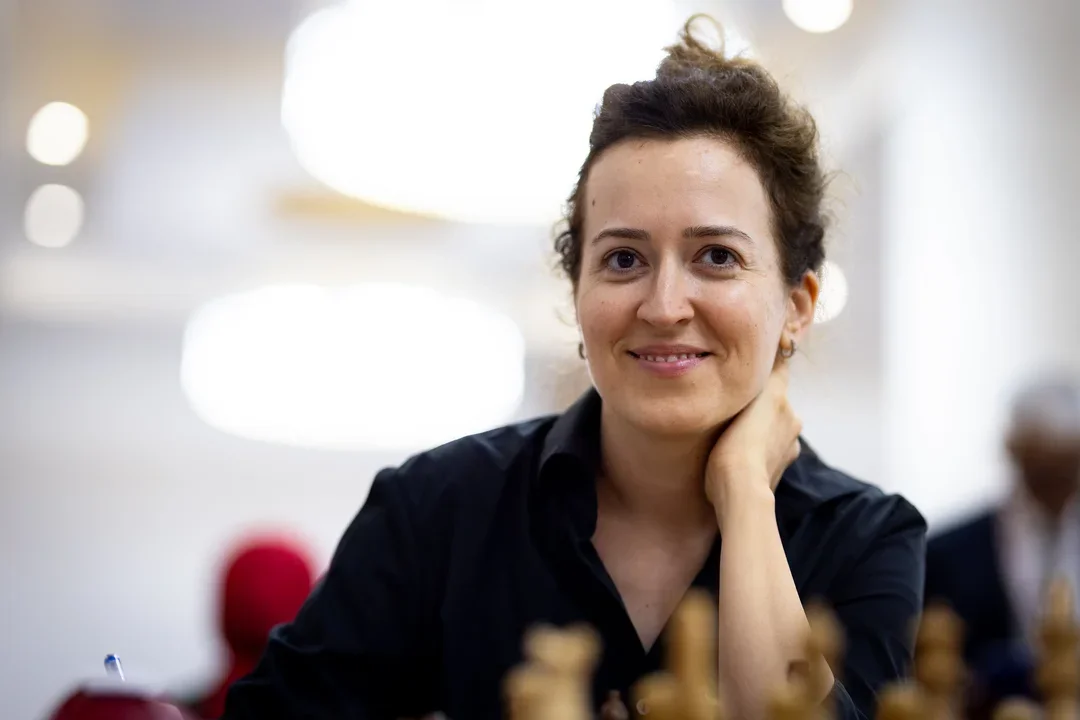
Krush was unable to win her opening game with the black pieces against 16-year-old WGM Alserkal Rouda Essa (United Arab Emirates), even getting into some trouble out of the opening, as Foisor demonstrates below:
But after winning her second game, Krush is through to the second round, where she is set to face …
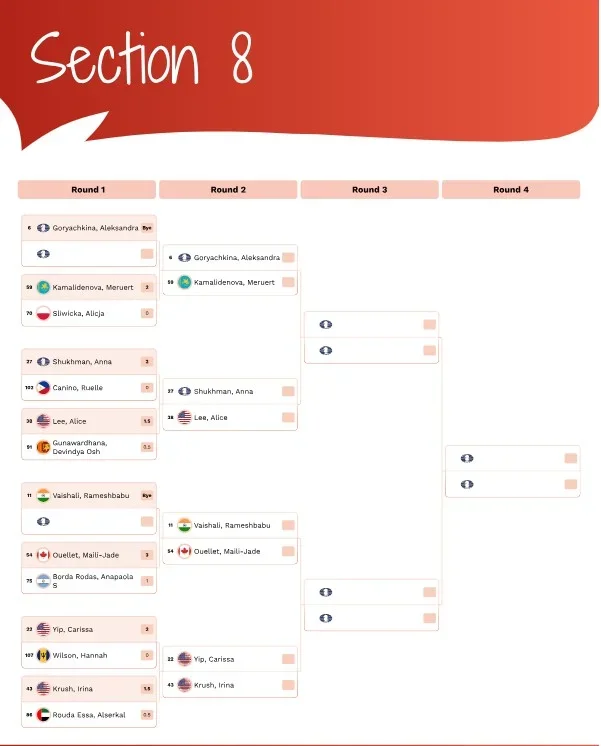
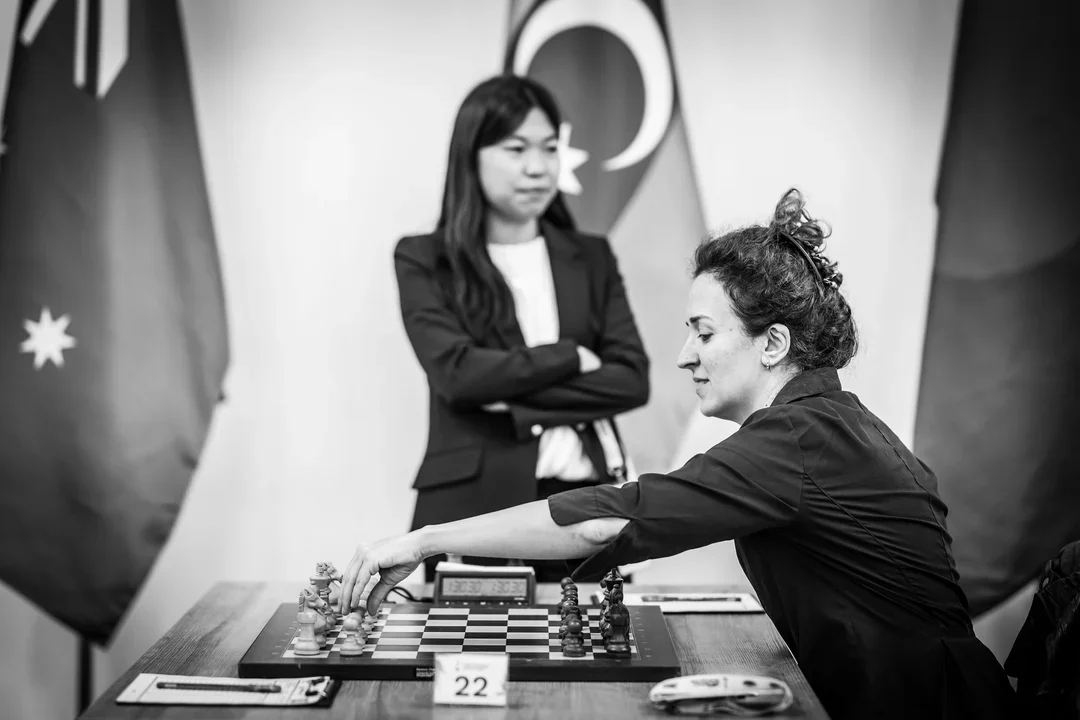
Those with good eyesight might catch that Lee is also in this eighth of the bracket, making for another possible all-American pairing in the fourth round. But reigning Women’s World Cup champion GM Aleksandra Goryachkina is in Lee’s sixteenth of the bracket, while GM Vaishali Ramshbabu is in Yip and Krush’s sixteenth.
Finally, Cervantes had the toughest pairing of the first round, facing off against WCM Bat-Erdene Mungunzul of Mongolia. Don’t be fooled by her title: The 17-year-old is eligible for the WIM title at the next FIDE Congress and, with a 2337 rating, entered the competition with a 55-point advantage over Cervantes.

The first game started off exceptionally for Cervantes, who found herself with a pleasant position as Black and a clear path to improvement as explained by Foisor:
After the heartbreaking loss, Cervantes entered Monday’s second game with high stakes: win or go home. She chose the former:
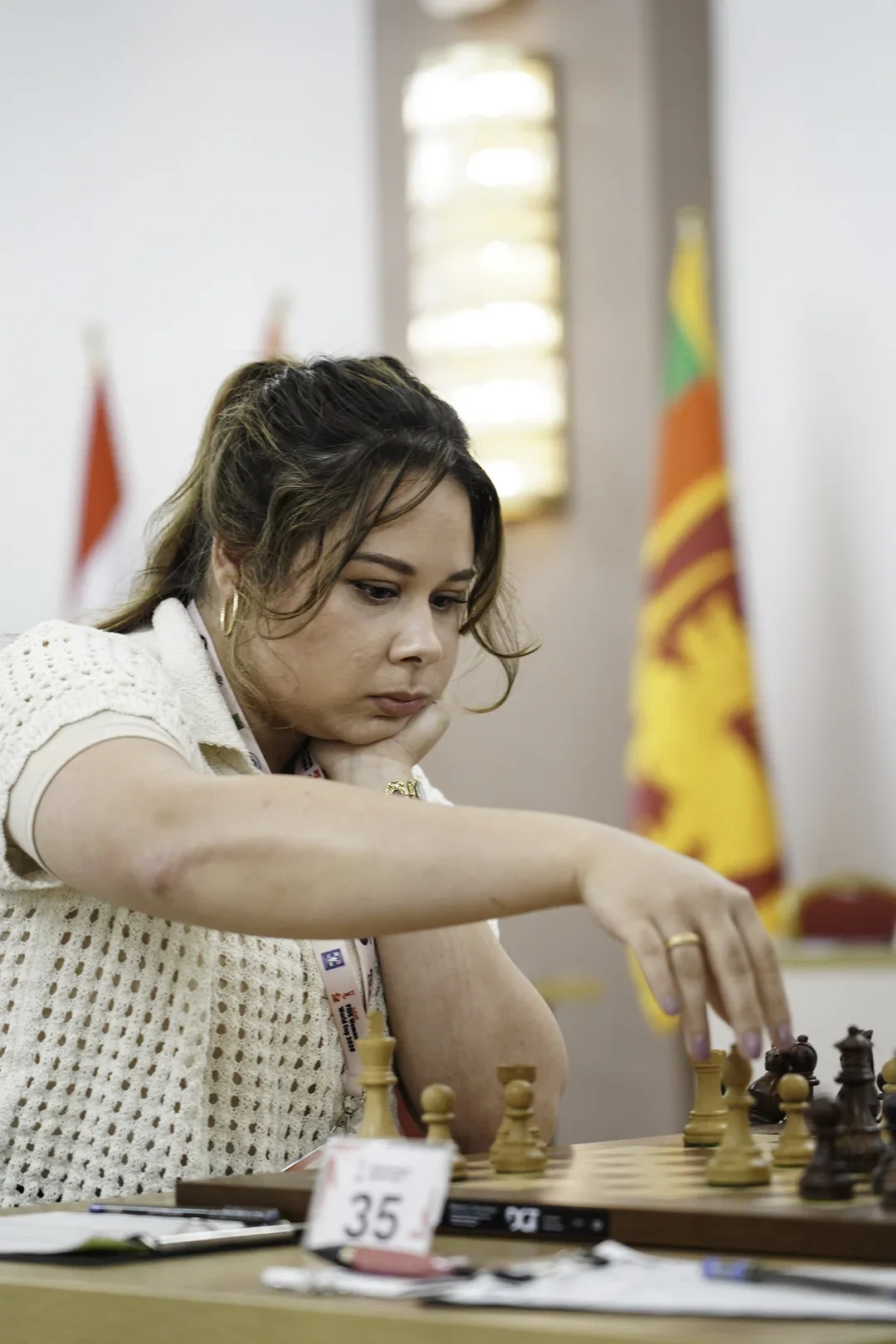
In Tuesday’s first tie-breaker game (read on below for details of the tie-breaker format), both players were low on time when Cervantes missed an opportunity to unleash an unusual winning tactic, only for her opponent to walk into a much simpler one a few moves later.
After holding a draw in the second rapid game, Cervantes clinched her match 2½–1½ and now faces Ukrainian GM Mariya Muzychuk. All pairings are available here and games are broadcast on Chess.com and lichess.org.
By my count, the higher-seeded player won 31 of the 43 matches, with WIM Priyanka K (India) being the lowest-seeded player (93rd) to advance, eliminating Hungarian WGM Zsoka Gaal (36th).
Priyanka’s victory is especially impressive considering the amount of stamina it required, with Gaal losing her first classical game before tying the match and eventually winning 5–3 after three sets of tie-breakers. The only other match to go that long was Iranian WIM Anahita Zahedifar’s upset over Azeri WGM Govhar Beydullayeva. Fittingly, Zahedifar’s victory was the second-biggest upset of the round, with the 89th seed eliminating the 40th seed.
If the match is tied after the two classical games, the players continue to play pairs of games with increasingly faster time controls until there is a winner. The first tie-breaker is a two-game rapid match with a time control of 15 minutes for the game with a 10-second increment from move one. If still tied, the second tie-break match consists of two games with 10 minutes, rather than 15, for the game. The third tie-breaker consists of two five-minute games with only a three-second increment.
In the first round, no match made it past the third tie-breaker. But, with even smaller ratings disparities likely to occur in each subsequent round, it would be shocking if at least one match does not make it to further. The fourth tie-breaker lowers the clocks to three minutes per side with a two-second increment.
Finally, beginning with the fifth tie-breaker, the match moves to sudden death, where the players play one game of blitz at the same time control of three minutes per side with a two-second increment. If there is a winner, the match is over. If the game is drawn, the sixth tie-breaker is a repeat of the same format with colors reversed, and this continues until somebody wins a game.
Categories
Archives
- December 2025 (24)
- November 2025 (29)
- October 2025 (39)
- September 2025 (27)
- August 2025 (29)
- July 2025 (43)
- June 2025 (25)
- May 2025 (24)
- April 2025 (29)
- March 2025 (29)
- February 2025 (20)
- January 2025 (24)
- December 2024 (34)
- November 2024 (18)
- October 2024 (35)
- September 2024 (23)
- August 2024 (27)
- July 2024 (44)
- June 2024 (27)
- May 2024 (31)
- April 2024 (51)
- March 2024 (34)
- February 2024 (25)
- January 2024 (26)
- December 2023 (29)
- November 2023 (26)
- October 2023 (37)
- September 2023 (27)
- August 2023 (37)
- July 2023 (47)
- June 2023 (33)
- May 2023 (37)
- April 2023 (45)
- March 2023 (37)
- February 2023 (28)
- January 2023 (31)
- December 2022 (23)
- November 2022 (32)
- October 2022 (31)
- September 2022 (19)
- August 2022 (39)
- July 2022 (32)
- June 2022 (35)
- May 2022 (21)
- April 2022 (31)
- March 2022 (33)
- February 2022 (21)
- January 2022 (27)
- December 2021 (36)
- November 2021 (34)
- October 2021 (25)
- September 2021 (25)
- August 2021 (41)
- July 2021 (36)
- June 2021 (29)
- May 2021 (29)
- April 2021 (31)
- March 2021 (33)
- February 2021 (28)
- January 2021 (29)
- December 2020 (38)
- November 2020 (40)
- October 2020 (41)
- September 2020 (35)
- August 2020 (38)
- July 2020 (36)
- June 2020 (46)
- May 2020 (42)
- April 2020 (37)
- March 2020 (60)
- February 2020 (38)
- January 2020 (45)
- December 2019 (34)
- November 2019 (35)
- October 2019 (42)
- September 2019 (45)
- August 2019 (56)
- July 2019 (44)
- June 2019 (35)
- May 2019 (40)
- April 2019 (48)
- March 2019 (61)
- February 2019 (39)
- January 2019 (30)
- December 2018 (29)
- November 2018 (51)
- October 2018 (45)
- September 2018 (29)
- August 2018 (49)
- July 2018 (35)
- June 2018 (31)
- May 2018 (39)
- April 2018 (31)
- March 2018 (26)
- February 2018 (33)
- January 2018 (30)
- December 2017 (26)
- November 2017 (24)
- October 2017 (30)
- September 2017 (30)
- August 2017 (31)
- July 2017 (28)
- June 2017 (32)
- May 2017 (26)
- April 2017 (37)
- March 2017 (28)
- February 2017 (30)
- January 2017 (27)
- December 2016 (29)
- November 2016 (24)
- October 2016 (32)
- September 2016 (31)
- August 2016 (27)
- July 2016 (24)
- June 2016 (26)
- May 2016 (19)
- April 2016 (30)
- March 2016 (36)
- February 2016 (28)
- January 2016 (32)
- December 2015 (26)
- November 2015 (23)
- October 2015 (16)
- September 2015 (28)
- August 2015 (28)
- July 2015 (6)
- June 2015 (1)
- May 2015 (2)
- April 2015 (1)
- February 2015 (3)
- January 2015 (1)
- December 2014 (1)
- July 2010 (1)
- October 1991 (1)
- August 1989 (1)
- January 1988 (1)
- December 1983 (1)





